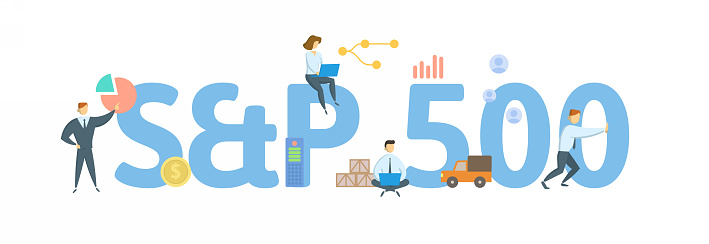US equity index futures are on the back foot in pre-US market trade; E-mini S&P 500 futures are down over 1.0% on the session and recently gave up the 4100 handles. E-mini Nasdaq 100 futures, meanwhile, are down an even steeper 1.6%, though the index is for now holding onto the 13K level. Overnight losses come following a downbeat session yesterday; one catalyst for the downside appears to have been weak housing data, which sent homebuilders lower. US Housing Starts fell 9.5% MoM in April amid the largest drop in single-family starts since the Covid-19 shutdown in 2020. Capital Economics attribute high lumber and other material prices as constraining activity in the sector. Though Capital Economics still remain bullish on housing starts for the rest of the year amid strong new home demand in the low interest rate environment, other market participants seemed to take the data as further evidence of stagflation in the US economy (i.e. high inflation that causes demand destruction, thus hurting growth). Recall that last Friday the preliminary estimate from the University of Michigan of Consumer Confidence in May unexpectedly fell back with consumers concerned about inflation – stagflation fears may remain a theme that can weigh on risk appetite at times.
More broadly, there has not been too much other news to drive the macro narrative, and the fact that US bond yields are a little higher and that the safe-haven US dollar is a little higher seems to be weighing. Ahead of tonight’s FOMC minute release at 1900BST, which is not expected to add much to the macro narrative given that the release of unexpectedly weak jobs data and strong inflation data for the month of April renders it somewhat out of date, US 10-year yields are consolidating close to highs of the week just above 1.66% and the Dollar Index (DXY) has just about managed to reclaim the 90.000 handle. US bond market traders will be focused on a 20-year bond auction at 1800BST. Meanwhile, higher European bond yields seem to be weighing on stock markets there; the Stoxx 600 is currently down about 1.3% as German 10-year yields crossed above -0.10% for the first time in two years, up about 2bps on the day (other major European 10-year bonds are up by a similar amount).
In terms of commodities, crude oil prices are down this morning, with WTI and Brent each having lost more than $1.0 to take them under $64.50 and $68.00, respectively. The main story today is US/Iran JCPOA negotiations; a Russian diplomat said that an “important announcement” will be made at some point today (timing unclear for now), which initially got market participants excited that a deal might be about to be announced, though it soon became clear that this was not going to be the case, with European sources starting that while there has been progress in talks, a deal remains elusive, whilst a WSJ reported alleged that talks will be taking a short break after today. With regards to the announcement, speculation is now that Iran and the IAEA are set to announce that they have agreed an extension to their temporary nuclear monitoring agreement, which is currently scheduled to end on the 21st of May – this deadline has reportedly hung-over talks, as after this date the international community would no longer be able to accurately monitor Iranian nuclear activity, which could cause tension. Thus, the extension of this deadline naturally removes a roadblock to a deal, hence why crude oil markets are taking the above developments as a negative sign – note that a deal between the US and Iran on returning to the JCPOA would remove oil export sanctions on the latter, which oil strategists have argued could increase oil production to as much as 4M barrels per day in as little as three-months. ING and other banks have argued that markets would be able to absorb this additional supply, however, with some of the increased Iranian output being offset by other OPEC producers as well as an expected increase in demand amid lockdown easing and going into the Northern Hemisphere’s summer driving season.
A quick note on other commodities; gold is has slipped from earlier highs above $1870 amid a broadly firmer dollar, though seems likely to hold above $1850 so long as the dollar index does not surge to powerfully above the 90.00 handle. Industrial metals are also broadly under pressure, with copper prices down about 2.5% with some analysts also citing negative supply side developments (Glencore announced plans for a new copper mine next year). Meanwhile, China continues to ramp up efforts to curb commodity price inflation; according to state media there, China will curb unreasonably increases in commodity prices in a bid to prevent any pass through to CPI and will step up oversight of commodity spot and futures markets to clamp down on “abnormal” transactions. Such steps are likely to weigh on industrial metal and other raw material prices, many of which have surged higher in recent weeks.
Turning back to FX markets; in fitting with the downbeat risk tone being set in equity and commodity markets, risk-sensitive currencies are the worst performing in the G10. NZD is the worst performer, down about 0.9% on the session versus the buck, with NZDUSD back under 0.7200 and testing this week’s lows around 0.7180. Kiwi traders will have to turn their focus away from global dynamics to domestic events with the release of the New Zealand government’s budget tonight. NOK is the next worst performer, down just under 0.8% on the session versus the US dollar, closely followed by AUD (down 0.7%) and SEK (down just under 0.6%). The Aussie failed to garner any benefit from slightly stronger than forecast wage price index data overnight, which showed wages increasing at a YoY pace of 1.5% (slightly stronger than forecasts for a rate of increase of 1.4%) in Q1 2021 – note that the RBA has suggested wages need to be increasing at a pace of 3.0% per year for inflation to hit its 2-3% target (a requirement for the bank to start hiking interest rates). Clearly then, it will be some time before wage growth reaches these levels, implying low RBA rates for a long time. Sticking with Aussie data, Westpac’s Consumer Sentiment survey for May dropped 4.8% and this may be contributing to Aussie weakness.
In terms of the rest of the G10; higher European yields are helping the euro to outperform its low yielding peers CHF and JPY, though the euro is still lower on the session versus the US dollar by about 0.2%, enough to see EURUSD drop back to the 1.2200 handle from earlier highs in the 1.2240s. CHF and JPY currently nurse losses versus the buck of between 0.3-0.4%, enough to push USDJPY back above 109.00 and USDCHF back above 0.9000. GBP is down about 0.3%, with GBPUSD having slipped back to around 1.4150 from earlier session highs at 1.4200, with not too much of a reaction seen in sterling to the latest CPI numbers for the month of April, which saw prices jump 1.5% MoM in April. Capital Economics attribute much of the jump to energy prices (hence why core CPI was only up 0.3% MoM), and the consultancy continues to doubt a sustained increase in inflation that would concern the Bank of England will happen until late in 2023. Elsewhere, CAD is down about 0.2%, not too bad considering the drop in crude prices and weakness in risk-sensitive currencies, which CAD is typically classified as, with traders likely holding fire ahead of Canadian CPI data for the month of April out at 1330BST.
The Day Ahead
Crude oil market participants will be awaiting this announcement; as noted, expectations are for an extension of Iran and the IAEA’s temporary monitoring deal beyond its 21st May deadline, which would be a positive sign for talks. Otherwise, weekly official EIA inventory data is also of note at 1530BST. Also as noted, Canadian inflation numbers will be in focus at 1330BST. We then have Fed speak from Quarles, Bullard and Bostic at 1500BST, 1530BST and 1635BST respectively ahead of the release of the minutes of the last meeting at 1900BST. Other events of note include a speech from ECB Chief Economist Lane at 1650BST and a US 20-year note auction at 1800BST; with regards to the former; ECB officials have been expressing comfort with yields at current levels in recent days, in stark contrast to when yields rose back in February, perhaps a reflection of the better place the Eurozone economy is in right now compared to back then (when the continent was being engulfed by Covid-19 infections).




